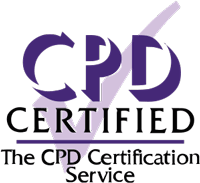Team Leader Course | Online Leadership Training
Team Leadership
Skills you’ll gain
Effective team leaders are highly sought after in every industry. Whether you are already in a team leadership role or want to improve your chances of being promoted, this online leadership training can help you cultivate the best practices to support, inspire and motivate your team to deliver the best results.
In this Team Leader course, you will learn to utilize the people management skills required to lead successful, high performing teams, including clearly communicating responsibilities, resolving conflict and problem solving.
Highlights:
- 25 lessons
- Distinguish between business groups and teams.
- Identify the roles and responsibilities of team members.
- Plan team building and oversee team goal setting.
- Track performance, accountability and time management.
- Supervise team meetings, negotiations and decision making.
- Apply problem solving techniques to resolve conflicts and team dysfunction.
Once enrolled, our friendly support team and tutors are here to help with any course related inquiries.
Syllabus
Download syllabus-
1
Team Building Teams go through stages as they become acquainted with each other and establish trust. These stages lead to improved team performance. 5m
-
2
Setting Team Goals Teams perform better when they have clear shared goals. One key element of good team leadership is helping your team establish team goals. 6m
-
3
Roles and Responsibilities An important attribute of team leadership is clarifying the roles and responsibilities of all team members. Every team member has an important role and is likely to be leading some of the team activities. 6m
-
4
Tracking and Accountability Responsibility and accountability should be aligned. When team activities are tracked and team members held accountable for results, they should first have had the responsibility for creating those results. 4m
-
5
Time Management A major concern for many team leaders is effective team time management. The team leader must address distractions and time wasting delays. This often involves changing the habits and behaviours of team members. 6m
-
6
Changing Team Members When team members are changed, the team leader needs to manage both the process of saying, “Goodbye” to one individual and saying, “Hello” to another. 5m
-
7
Team Closure Sometimes teams are disbanded. This happens with all project teams and some functional business teams. During the time of team closure the team leader must manage both the technical aspects of closure and the emotional aspects. 5m
-
1
Communication Processes Teams must communicate to be effective. Understanding the principles for good communication will help a team leader ensure their team is able to communicate well. 6m
-
2
Communication Constraints Teams rely on effective communication, yet there are many factors that can inhibit communication. When these factors are present, the team leader needs to proactively manage the team communication processes to overcome them. 6m
-
3
Team Meetings Most teams have team meetings and effective team meetings are an excellent way to manage the communication processes. Team leaders are normally responsible for organizing and managing team meetings. 5m
-
4
Virtual Team It is common in today’s business environment to be a member of or leading a virtual team. There are several unique challenges with these teams that the team leader must be prepared to address. 5m
-
1
Team Decision Making Teams sometimes implode when faced with making a team decision. A team leader needs to be able to bring the team through the decision making process with a good decision and team support for the decision. 6m
-
2
Team Negotiation Team members will often need to negotiate with each other on tasks and activities and the team leader may need to negotiate with the other managers or supervisors of team members. The team leader needs to have good negotiation skills in order to facilitate these types of meetings. 6m
-
3
Conflict Resolution From time to time teams will experience conflict. When the team leader or team members are able to resolve the conflict in a positive manner, the team becomes stronger and performs better. 5m
-
4
Resolving Team Problems Even the best teams will sometimes have problems with the how the team is working together. These problems often are based upon the leadership and followership traits of the team members. 6m
-
1
Five Team Dysfunctions Lencioni’s book, “The Five Dysfunctions of a Team: Leadership Fable” tells the story of how to build a business team. During the lifecycle of the team, it is common to face dysfunctional behaviour that must be overcome. 4m
-
2
Absence of Trust Absence of Trust is one of the five team dysfunctions. In this case, team members are not willing to be vulnerable to each other; they are not asking and giving help, they are not acknowledging mistakes, and they question the intents and motives of team members. 5m
-
3
Fear of Conflict Fear of conflict is one of the five team dysfunctions. In this case, team members do not engage in conflict even when it is critical to team success. 5m
-
4
Lack of Commitment Lack of Commitment is one of the five team dysfunctions. In this case, team members have not bought into the team goals, or they don’t understand those goals. 5m
-
5
Avoidance of Accountability Avoidance of Accountability is one of the five team dysfunctions. In this case, team members are not willing to confront each other about team performance; team members accept low standards and often fail to even achieve those, creating resentment and animosity among the other team members. 6m
-
6
Inattention to Results Inattention to Results is one of the five team dysfunctions. In this case, team members are focused on personal goals or achieving personal status through team membership than in working to achieve team results. 5m
Certificate
Certificate of Completion
Awarded upon successful completion of the course.

Instructor
Ray Sheen
Ray is a certified Project Management Professional (PMP) with the Project Management Institute, a certified Scrum Master with Scrum Alliance, and certified Lean Six Sigma Black Belt with IASSC. He is a member of the Project Management Institute and the Product Development Management Association.
He is president and founder of Product & Process Innovation, Inc. and is a veteran business leader with over 25 years of executive, project management, and engineering management experience. Ray has worked in several industries including aerospace, electrical distribution and utilities, biotechnology, appliances, electronics, machining, medical devices, pharmaceutical, automotive, and financial services. He has held executive management positions in a Fortune 500 company and has been involved in entrepreneurial startup organizations.

Ray Sheen
Project Management Instructor & Author
Accreditations
Link to awardsHow GoSkills helped Chris
I got the promotion largely because of the skills I could develop, thanks to the GoSkills courses I took. I set aside at least 30 minutes daily to invest in myself and my professional growth. Seeing how much this has helped me become a more efficient employee is a big motivation.


